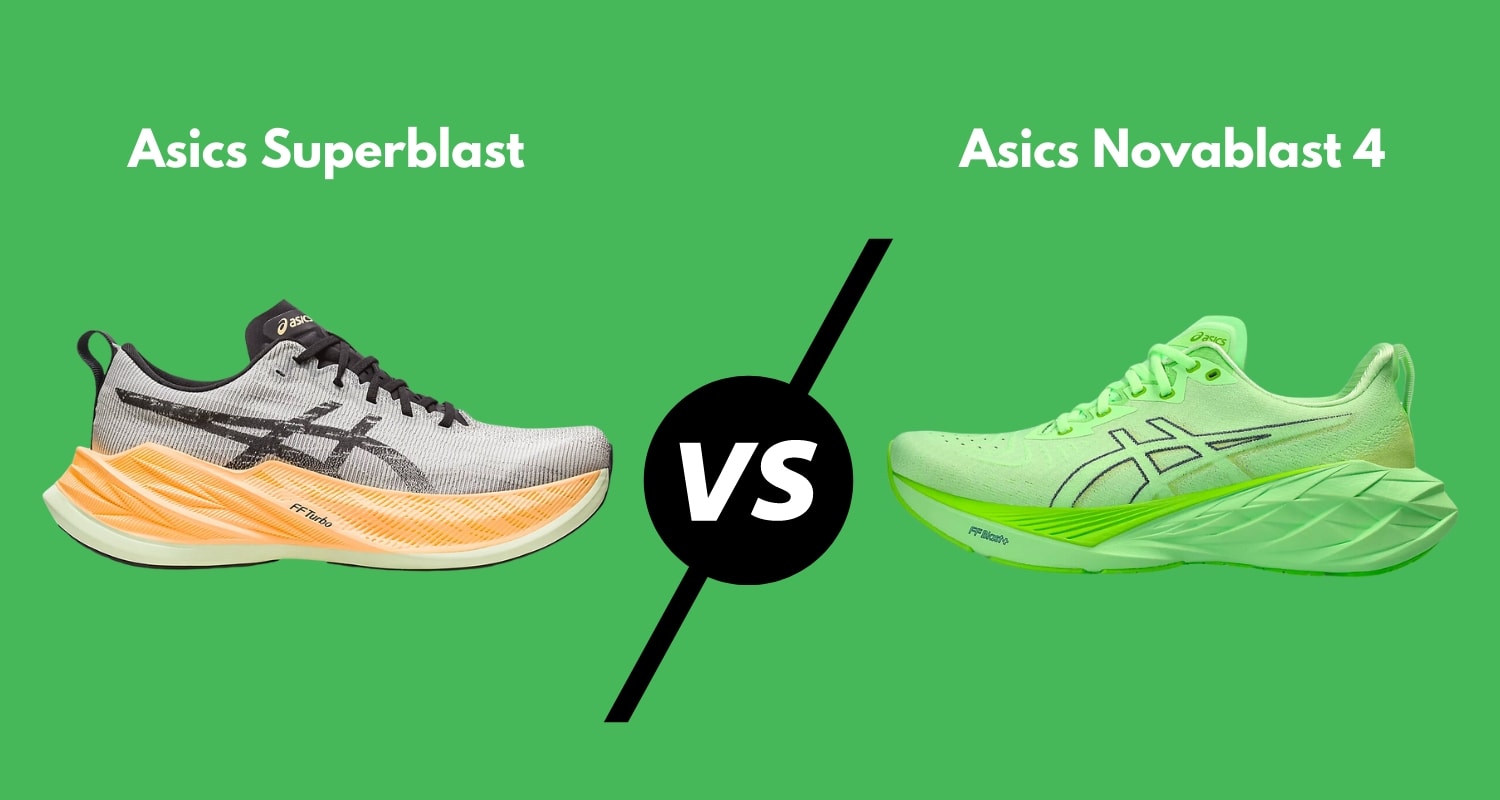Asics Superblast vs Novablast 4: Which One? (2024 Comparison)

Despite their similar names, the Asics Superblast and Novablast 4 running shoes have some notable differences, as we’ll see in this detailed comparison.
The first striking difference is the stack height. With a 45.5-mm heel stack height versus 41.5 mm for the Novablast, the Superblast is more cushioned. Foam technologies are similar, with FlyteFoam Blast Eco for the Nova and FlyteFoam Blast+ and FlyteFoam Blast Turbo for the Super.
The heel-to-toe drop of 8 mm is standard.
The underfoot feel is fairly soft on both models, with a good dose of responsiveness. Being closer to the ground gives the Novablast a more responsive ride. Still, the bounce is also very much present on the Superblast, especially when you extend the distances.
It may come as a surprise that the Superblast doesn’t have a carbon plate to give it more structure and propulsion, but it seems that the Japanese brand wants to make it a “super trainer” for ultimate comfort to train at any pace.
Regarding lockdown, the fit is more precise on the Novablast but more comfortable on the Superblast because it’s softer.
Last but not least, durability is similar with a premium conception and high-quality materials.
Superblast vs Novablast: Which One Should You Pick?
Put simply, the Superblast is a higher-end Novablast with more cushioning and greater comfort for long runs, especially tempo sessions.
However, with a price difference of $70-80, the Novablast 4 offers more value by being more versatile and equally fun. Still, the Superblast will delight fans of the brand who have the budget to add a pair of daily trainers to their rotation for longer and faster runs.
